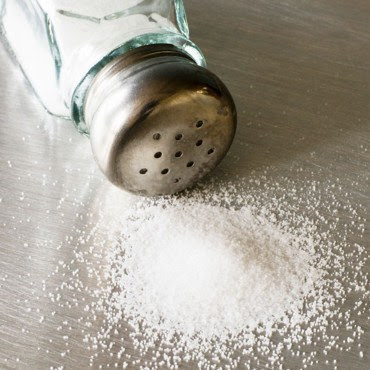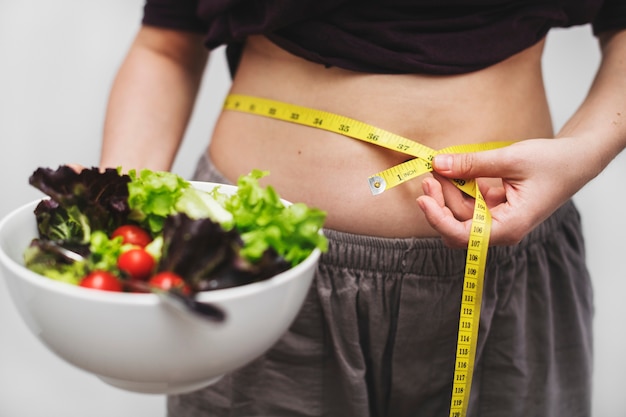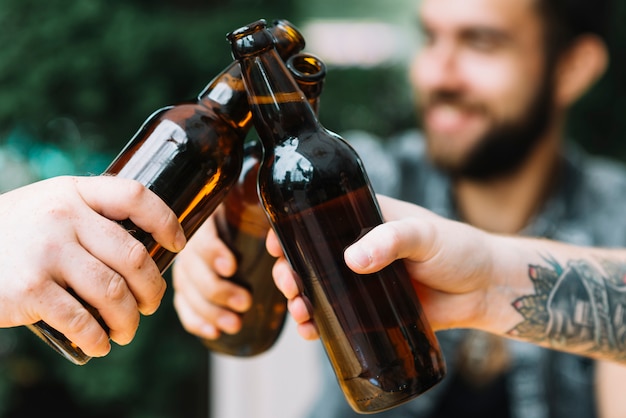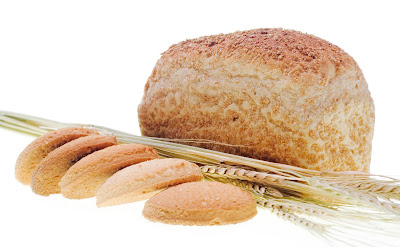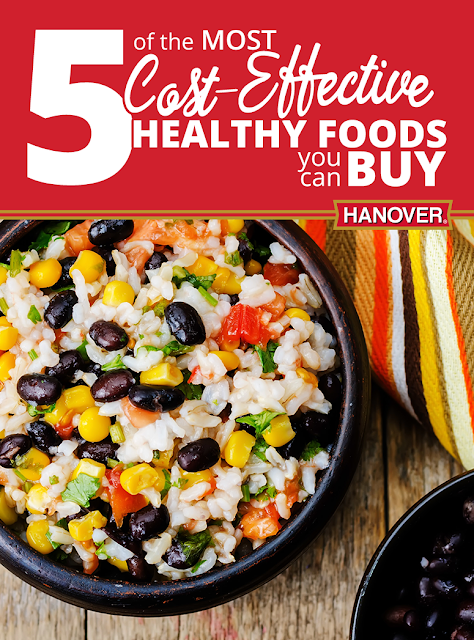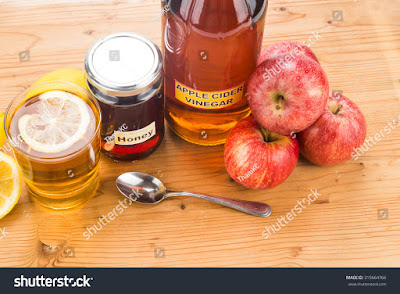Featured Posts
Flu Shot Symptoms and who should get a flu shot
It's time for your flu shot this year, and you want to know who should get a flu shot. It's important to avoid the flu and stay h...
8/23/17
One type of diet is the best for your body and brain — but a lot of people are doing it wrong
A growing body of evidence suggests that a plant-based diet — one that focuses on vegetables, whole grains, and lean proteins — is the single best eating plan for your body and brain. It's been found to be ideal for losing weight, staying lean, and even keeping the mind sharp.
But a lot of people are doing it wrong.
For a recent study published in the Journal of the American College of Cardiology, researchers at the Harvard T.H. Chan School of Public Health analyzed the eating habits of more than 200,000 health care workers over the course of more than 20 years. They sought to find out whether there was any observable link between their eating habits and their risk of developing coronary heart disease.
Unsurprisingly, many of the health professionals stuck to a plant-based, vegetarian diet. But among the vegetarians, eating habits differed drastically — and in some cases appeared to be less healthy than the diets of the non-vegetarians.
Many more children will suddenly be diagnosed with high blood pressure
(CNN)More children and teens are likely to be categorized as having abnormal blood pressure during their annual wellness visits, based on new recommendations released Monday by the American Academy of Pediatrics.
High blood pressure is mostly a "silent" condition, with no visible symptoms. Yet it can have long-term health consequences, including cardiovascular disease. The new guidelines, aimed at prevention, were published Monday in the journal Pediatrics. They include new diagnosis tables based on normal-weight children.
The academy convened a 20-person committee to update the previous guidelines, issued in 2004, and develop new evidence-based recommendations. As part of its work, the committee reviewed nearly 15,000 articles focused on diagnosis, evaluation and early management of abnormally high blood pressure in children and teens.
Obesity and family history
An estimated 3.5% of all children and teens in the United States have hypertension, according to the guidelines.Hollywood Hunger Hacks: Healthy Movie Theater Options
There is a new star in Hollywood. It’s not your typical blond bombshell or chisel-jawed leading man but you’re going to love it. This summer love is between us, the American public, and MoviePass, a new membership that allows you to see unlimited movies at many theaters across the country for a single Hamilton every month. With such an outrageously positive response to the launch of this program we can expect to reunite with those movie nights from our past. The only issue is figuring out how to enjoy the newsiest blockbuster and still fit in the seats. Movie theaters can be a tough place to make healthy food choices but with some cinema culinary cues we can look forward to a happily-ever-after, nutritionally at least.
Below are three foods to pick at the theater to keep you more of an Arnold then a Jaba:
Be a Baby About It. When you have 20 hangry movie watchers behind you in the concession line, making fast non-customized orders can be a necessity. My simplest and quickest nutrition change is to make portioning sizes a no-brainer, pick the happy meal of the cinemas—the kids pack. Each pack normally contains a small popcorn, mini-candy and small drink. This type of packaging gives you just a taste of all the things you love with limited calories, sodium and fat.
Healthy food right at your door
If limited time makes it difficult for you to make healthy food choices, on-demand food delivery service foodpanda has the answer -- a variety of healthy meals that can be delivered to your door in just 40 minutes.
Fancy a low-calorie salad? Then try the Daily Fix salad or the Broccoli Salad at only 60 kcal from Daily Fix, or Super Fit Wraps and the Detox Antioxidant Salad from Dressed.
For a healthy breakfast, check out the Avocado Toast or the Skinny Royale served with poached egg and smoked salmon on rye toast from Brekkie. Mix and Munch, meanwhile, offers Savoury Thai Meal Boxes served with riceberry and salad.
Desserts can be healthy too with such vegan sweet treats as the eggless and organic Orange Cake from Govinda. For drinks, Sourced & Grocers offers cold pressed juices along with healthy snacks.
Throughout this month, enjoy free delivery from Dressed for all orders as well as a free healthy dessert for orders above Bt290 from Sourced & Grocers.The healthy dishes are now available at www.FoodPanda.co.th or via the mobile phone application foodpanda.
What Nutritionists Pack Their Kids for Lunch
Registered dietitians have picky kids too! When my son was younger, he would never eat fruit when he was younger, but he would go for green vegetables. Go figure!? For his lunch, I would pack broccoli because I knew he would eat it. I asked other RDs from around the country pack in their kids’ lunchboxes, and some of their answers may surprise you.
Fruit
It’s no surprise that fruit tops the list of RD-approved lunch fare.
“My 2 year-old son Lucca loves fresh raspberries, so I pack him a container of organic raspberries every day he attends daycare. If the berries don’t look good at our local grocer, I’ll slice up organic strawberries, which he also loves. He puts the raspberries on his finger tips and eat them off one by one.”
–Jenny Shea Rawn MS, MPH, RD is a Cape-Cod, MA, based Registered Dietitian, nutrition communications consultant and healthy food blogger at MyCape Cod Kitchen.
“I always include a fresh fruit that’s easy to eat, like watermelon chunks, grapes, or fresh or frozen mango, depending on the season. Adding fruit helps curb sweet indulgences and boosts water intake.”
–Melissa Halas-Liang, MA RD CDE of SuperKidsNutrition
8/20/17
Give your healthy diet a boost with supplements
 |
| By Freepik |
Dietary supplements can’t replace a healthy diet and lifestyle, but as we age, we may need a little boost to stay in top shape.
The bodies of older women don’t absorb or process vitamins and minerals the way they did when they were younger, and require more of some micronutrients to run smoothly, says Alexander Michels, clinical research coordinator for Oregon State University’s Linus Pauling Institute, where scientists study the role of vitamins, minerals and plant chemicals.
Supplements can help prevent deficiencies and improve your health.
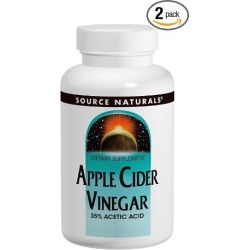 |
| Source Naturals Apple Cider Vinegar 500mg Dietary Supplement - 180 |
Here are the best to try:
Iodized Salt Is No Longer a Required Part of a Healthy Diet—Here’s Why
It’s no secret by now that eating too much salt can wreak havoc on your body. But what the heck is iodized salt, and should you be buying it?
For starters, iodine is an element that regulates your thyroid glands, stimulates brain development, and naturally detoxes your body. Most adults need about 150 mcg of iodine per day in order to avoid a deficiency, according to experts. Thankfully, the National Institutes of Health’s Office of Dietary Supplements say that Americans and Europeans are what’s called “iodine sufficient,” meaning their diet is varied enough to provide the necessary levels of iodine. That’s true even if they don’t use iodized salt, according to the Institutes’ research.
But don’t relax just yet. Iodine deficiencies can be pretty scary, and if you are pregnant, you need to be particularly cautious. The need for iodine increases during pregnancy, because low iodine levels can endanger your baby’s mental development. Doctors often advise pregnant women to eat dairy products and take vitamin supplements, but you should see your own doctor before making any radical changes to your diet. (Still, you can safely stick with these snacks to eat while pregnant.)
For everyone else, you need not worry too much about your iodine levels. And while it’s true that you can get your daily intake of iodine from iodized salt, that’s not always the healthiest solution. To reach the recommended level, you would need to eat more than half a teaspoon of iodized salt a day, which is two-thirds of the daily amount of sodium (1,500 milligrams) recommended by the American Heart Association. (These are the signs you’re eating too much sodium.)
Experts recommend getting your iodine from food, instead. Good sources of iodine—other than iodized salt, of course—include fish, dairy products, grains like bread, and fruits and vegetables. Multivitamin pills and seaweed are also rich in iodine. Make any or all of these foods a staple in your diet, and rest assured you’re well on your way to an iodine-sufficient life.
Now that your mind is in the kitchen, check out the real difference between baking power and baking soda.
For Mind-Health, Change Lifestyle Patterns
According to the Alzheimer’s Association, over 5 million Americans are living with Alzheimer’s disease, and the number is projected to increase to 16 million in 30 years. In Pennsylvania, an 18.5 percent increase in diagnosis is estimated in people aged 65 and over in the next eight years.
The cost of caring for those with Alzheimer’s and other dementias is estimated to total $259 billion this year, likely increasing to $1.1 trillion (in today’s dollars) by midcentury. Nearly one in every three seniors who dies each year has Alzheimer’s or another dementia.
Why is the rate of Alzheimer’s disease increasing so dramatically? Research shows that several factors contribute to late-onset Alzheimer’s (over age 65, the most common form). These include older age, genetics (especially carrying the APOE4 allele), family history, a history of head trauma, midlife onset high-blood pressure, obesity, diabetes, and high cholesterol. Delving deeper, Americans are living longer, but over 65 percent of adults are overweight or obese, and diabetes rates are climbing (over a third have diabetes or prediabetes). What is good or bad for the heart is the same for the brain.
'Junk food' may increase cancer risk in 'healthy weight' women
"Women who eat junk food such as burgers or pizza are increasing their risk of cancer even if they're not overweight, new research has warned," reports the Daily Mail.
The story is based on research from the US looking at the diet of postmenopausal women in the 1990s and then tracking the development of a variety of cancers over about 15 years.
"Junk food" is often defined as food that is rich in calories (energy dense food) but low in nutrients.
Having a diet high in energy dense foods, such as biscuits, chocolate and pizza was found to increase the risk of cancer in these women, specifically in those of a healthy weight, which was defined as having a body mass index (BMI) of between 18.5 and 24.9. This suggests that having a healthy weight does not necessarily protect against cancer risk.
However the connections between diet, lifestyle and cancer outcomes are complex, and while the researchers attempted to adjust their results for other factors, we cannot say with certainty that energy dense foods increase your cancer risk.
The analysis was limited to postmenopausal women and did not consider drink intake, such as sugary drinks and alcohol, which can also be high in calories.
Still, having a healthy, balanced diet will help you get all the nutrients you need and may reduce your risk of developing cancer.
8/18/17
The truth about fats and sugar
For many of us, keeping a fit body and a healthy lifestyle is truly a struggle and it continues to wreak havoc on our happiness.
It seems all of the diet and fitness programs we’ve tried didn’t work. Aside from the money spent for enrolling in our favorite gym, we’ve been missing the taste of the foods we love to eat. Then, we will look in the mirror and blame all the fats we have eaten in the past.
In a press conference held recently at the Shangri-la Hotel in Makati City, Dr. Robert H. Lustig, a professor at the Division of Endocrinology in University of California, San Francisco stressed that for 45 years, fats have been wrongly demonized when all the while the real culprits have been sugar, refined carbs and processed foods.
Sugar was really the bad guy
My point today is to give you a different view of what the problem is so that you will not be taken in by standard food industry propaganda. We’re here to expose you to the real problem in terms you all understand. In order to do so, I have to explain this phenomenon here called metabolic syndrome,” Lustig said.
Metabolic syndrome according to Mayo Clinic is “a cluster of conditions—increased blood pressure, high blood sugar, excess body fat around the waist, and abnormal cholesterol or triglyceride levels—that occur together, increasing your risk of heart disease, stroke and diabetes. Having just one of these conditions doesn’t mean you have metabolic syndrome. However, any of these conditions increase your risk of serious disease. Having more than one of these might increase your risk even more.
It seems all of the diet and fitness programs we’ve tried didn’t work. Aside from the money spent for enrolling in our favorite gym, we’ve been missing the taste of the foods we love to eat. Then, we will look in the mirror and blame all the fats we have eaten in the past.
In a press conference held recently at the Shangri-la Hotel in Makati City, Dr. Robert H. Lustig, a professor at the Division of Endocrinology in University of California, San Francisco stressed that for 45 years, fats have been wrongly demonized when all the while the real culprits have been sugar, refined carbs and processed foods.
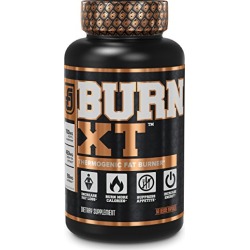 |
| BURN-XT Thermogenic Fat Burner - Weight Loss Supplement, Appetite Suppressant |
My point today is to give you a different view of what the problem is so that you will not be taken in by standard food industry propaganda. We’re here to expose you to the real problem in terms you all understand. In order to do so, I have to explain this phenomenon here called metabolic syndrome,” Lustig said.
Metabolic syndrome according to Mayo Clinic is “a cluster of conditions—increased blood pressure, high blood sugar, excess body fat around the waist, and abnormal cholesterol or triglyceride levels—that occur together, increasing your risk of heart disease, stroke and diabetes. Having just one of these conditions doesn’t mean you have metabolic syndrome. However, any of these conditions increase your risk of serious disease. Having more than one of these might increase your risk even more.
Tomatoes May Reduce the Risk for Skin Cancer
 Nothing beats a sun-ripened tomato picked at the height of the season. It’s basically the taste of summer. Yet there may be more reason to eat a tomato than deliciousness alone. Daily tomato consumption may reduce the risk of developing skin cancer, a new study suggests.
Nothing beats a sun-ripened tomato picked at the height of the season. It’s basically the taste of summer. Yet there may be more reason to eat a tomato than deliciousness alone. Daily tomato consumption may reduce the risk of developing skin cancer, a new study suggests.Researchers at Ohio State University found that male mice that consumed a daily diet including 10 percent tomato powder for 35 weeks and were subsequently exposed to ultraviolet light developed an average of 50 percent fewer skin cancer tumors compared to mice that did not consume any dehydrated tomato.
8/17/17
How to lose weight without giving up alcohol
Health professionals like myself can rattle off tons of reasons why drinking too much alcohol can impede weight loss but I’m sure you don’t want to listen to that speech with only a few weeks left of summer. So instead, I’ll share my favorite strategy to help you strike the perfect healthy balance whether you’re at Center City Sips, a backyard barbecue or down the shore. All you have to do is ask yourself these questions:
How much of a socialite are you?
One night out is fine, even two isn’t a problem, but if you’re out more nights than you’re home, you’ve got a problem.Whether you have client dinners, book club (aka drink wine and eat cheese night) or a date, you must make room for grocery shopping, sleep or exercise. Failing at these weekly routines makes losing weight harder than it needs to be.
Choose one of these routines — grocery shopping, sleep or exercise — and make it a priority on the week you have a packed calendar. If you know you’ll be out Sunday night, have Instacart deliver groceries so you’ll have healthy food on hand to start your week. Going on a date? Suggest meeting just for drinks and schedule it earlier in the evening so chances are you’ll be home in time for a decent night’s sleep. If you usually go to the gym in the evening but have an event after work, wake up early to get a short workout in instead of skipping it completely. For every 15 minutes of intense cardio, allow yourself one drink — but reasonably limit yourself to four.
This Naked Mind: Control Alcohol, Find Freedom, Discover Happiness
How complicated is your drink?
Strawberry mojitos, margaritas and sangria aren’t waistline friendly. The more ingredients in a cocktail (i.e. simple syrup, triple sec, house made bitters etc.), the more calories. Plus, the additional sugar intake in these cocktails can make you hungrier. When imbibing on these drinks, your blood sugar skyrockets higher than it would from beer, wine, or a shot of liquor mixed with club soda.So when it comes to cocktails, remember that the simpler the drink, the better. Choose something straight up and simple like wine (rose, sauvignon blanc and champagne is lighter in calories compared to a heavier red), clear liquor (over dark) or light beer.
Do you sip and snack?
What many people fail to understand is alcohol temporarily keeps your body from burning fat. Since alcohol is a toxin, your body can’t store those calories for later, in the way it does with calories from food. When you drink, your metabolic system must stop what it’s doing (burning off calories from your last meal) to get rid of the booze you’re ingesting. Basically, whatever you recently ate gets stored as fat until your drinks are metabolized. That’s why what you eat before and after happy hour is important.Start your morning off with a combination of protein and fat (eggs with avocado or a protein shake with flax seed and unsweetened almond milk), keep lunch lighter with protein and veggies and then be sure to have a mid-afternoon snack that includes protein, fiber and a healthy fat (Greek yogurt with berries or an apple and almond butter). This snack will help stabilize blood sugars without slowing down your metabolism pre-drinks. Post happy hour, avoid fried foods and refined carbohydrates.
Rockstar Energy Drink Recovery, Fruit Punch, 24 Count
Have a plan in place before you take you first sip. Research the menu at where you plan to imbibe ahead of time to scout out healthier options. My go-to snack picks for when I’m drinking are vegetable or seafood based options such as veggie and hummus platters or shrimp cocktail.
For those who drink moderately during the week, the above recommendations should help you establish a more balanced social life while still keeping you on track towards your weight loss goals.
12 Healthy Food Swaps For Your Favorite Refined Carbs
Make no mistake: Carbohydrates are essential—they’re the body’s main energy source. But the more refined a carb is, the worse it is for you: “Refined carbs have had much of the fiber and good-for-you compounds stripped away, which makes them less nutritious and filling,” says Rachel Meltzer Warren, RDN, a nutritionist in Jersey City, New Jersey. Minimally processed kinds, on the other hand, are typically a package of vitamins, minerals, fiber, and starch that digest more slowly and keep you fuller longer, she adds. These tweaks let you replace refined carbs (white flour and sugar, say) with more nutritious choices (veggies, pulses, whole grains) for a full tummy and steady energy.
Are the Health Benefits of Red Wine Actually Legit?
Every week it seems we're told to grab our corkscrews, raise a glass, and make a toast because—cheers!—wine is good for our health!
Now, I certainly enjoy a glass or two of vino (Italian, red, full-bodied, earthy), but the headlines are getting to be a bit ridiculous. A glass of wine is the equivalent of an hour at the gym? Even as someone who loves lifting weights and vinyasa, I only wish lifting my glass strengthened my biceps. And then in May, a meta-analysis published in the Journal of Studies on Alcohol and Drugs threw shade on a long-held belief, saying red wine doesn't reduce the risk of heart disease. Are the health benefits of alcohol all just fake news?
For starters, alcohol is technically toxic.
Toxins are something you hear about a lot—usually in the context of removing them from your body through some unproven method—so it's easy to take any mention of them with a grain of salt. But one thing that we actually know is a toxin to the body is alcohol.When your body breaks down wine, it releases toxins that damage your cells. The more you drink, the more damage is done, especially to your liver. Most of the alcohol we consume is broken down by the liver, making it “especially vulnerable to damage from excessive alcohol,” according to the National Institute on Alcohol Abuse and Alcoholism. This alone should be a reminder to be mindful of how often you down an entire bottle of cabernet.
The Health Risks of Too Much Salt
Most Americans, including older adults, consume too much salt—or more accurately, sodium—than they should. In fact, a recent report from the Centers for Disease Control and Prevention found that those 51 and older average about 3,000 mg of sodium per day, twice what the American Heart Association recommends and about 30 percent more than the Department of Agriculture dietary guidelines of fewer than 2,300 mg per day.
Why should you care? Because a steady stream of studies over decades has also linked too much sodium in the diet to hypertension (high blood pressure) and other risk factors for heart disease.
“There’s consistent evidence that in countries with high levels of salt intake, blood pressure rises more steeply with the aging of the population,” says Dariush Mozaffarian, M.D., dean of the Friedman School of Nutrition Science and Policy at Tufts University. “And in countries with low salt intake, blood pressure rates do not rise as much with age.”
But you may also have heard conflicting advice about sodium and whether everyone really needs to reduce consumption. It’s true that certain studies have shown no decrease in deaths from cardiovascular disease in people who ate less sodium. And others have even suggested that low-sodium diets could have adverse health outcomes, such as a rise in overall cholesterol and triglyceride levels.
“Most of the latter studies showing negative effects have been done with very large, very rapid reductions in sodium,” Mozaffarian says. “With slow reductions over time, there is very little plausible evidence of harm.”
7 ways to keep your 'thought life' healthy and your stress level low
Life gives people plenty of reasons to be stressed.
Relationship problems, child-rearing issues, job woes and a lack of money are just some of life's complications that can weigh people down — and cause health problems.
Chronic stress can damage your body, threaten your mental health, put a strain on relationships, and take the joy out of life.
But there's no reason to surrender to stress. Let me suggest seven techniques that can help you have a healthier "thought life" and recover from chronic stress:
The hidden health problems behind your sugar craving
Say it ain't so!
Pretty much everyone knows sugar is (by and large) bad for you. That isn’t news by any stretch.
But what you mightn’t be aware of is how a craving for sugar can actually be symptomatic of an underlying medical condition. In fact, a craving for the sweet stuff may actually point to problems from top to toe including the below:
The simplest thing you can do for your health is …
Chewing.
Yes, just chew your food, it’s that simple! How we eat food is actually much more important that what we eat.
Most people do not chew their food properly. The first thing I’ll do to ensure they chew well is to add a salad or some raw vegetables to their meals. Without that, if you’re not chewing properly, then constipation or IBS are almost inevitable.
8/15/17
Drink to your health? It depends on how much drinking you do, study shows
This just in, and it’s definitive (for now): People who drink alcohol in moderation — especially older people, women and non-Latino white people — are less likely to die of any cause than are teetotalers or people who consume heavy doses of alcohol either on occasion or in an average week.
In follow-up periods that hovered around eight years, moderate drinkers were no less likely than alcohol abstainers to die of cancer. But they were roughly a quarter less likely to die of heart disease or stroke than were people who never consumed alcohol.
Heavy drinkers fared slightly worse than moderate drinkers and never-drinkers in their likelihood of dying of any cause during the studies’ follow-up periods. But it wasn’t the risk of heart failure or heart attack that heavy drinkers drove up: it was cancer.
10 Healthy Food Essentials You Can Easily Make at Home—and Never Have to Buy Again
It all starts with your pantry.
A pantry full of whole grains and flours, nuts and seeds, dried beans and peas, teas and oils, is a critical tool to make healthy cooking super convenient. These foods are also excellent sources of nutrition, providing fiber, complex carbohydrates, essential fatty acids, crucial minerals such as zinc and iron, and more.
8/14/17
The Healthy Side Effect of Grocery Shopping Online
Skipping the supermarket could impact your impulsivity.
Looking to make healthier choices at the grocery store? You might want to skip the store entirely and shop online.
A new study suggests that when people shop online they tend to buy healthier food. Turns out that if you don’t see those Caramel M&M's, the spicy Sweet Heat Skittles, or the Jelly Doughnut-flavored Oreo cookies, the less likely you are to buy them (much to the chagrin of the candy industry).
8/13/17
Health risks of noise pollution
Stringent public health standards are hallmarks of an administration that protects its citizens from unnecessary risks. Environmental pollution is a major risk that is threatening the prosperity of many countries, including those that are performing well economically.
Environmental health pollution relates to the excessive noise caused by road and airport traffic as well as by industry, construction and other outdoor activities. Malta’s concentration of built-up areas with extensive ownership of cars, high tourist numbers and innumerable construction projects makes it particularly difficult for people to cope with the high levels of noise, especially in our urban environment.
What's That Smell? Possibly a Health Issue
Body odors can indicate serious medical problems
Odd smells on your breath may be about more than what you ate for dinner.
Many people feel self-conscious about body or breath odor and may wish to cover it up with deodorant, perfume or mouthwash. But by just masking smells, people could be ignoring serious health issues, according to medical experts.
Catch your breath
Do you notice your breath smelling fruity? It may not just be the peach you had with lunch, but rather a very serious medical complication of diabetes. Diabetic ketoacidosis (DKA) occurs when your body is running low on insulin, causing your blood sugar to spike, Robert Gabbay tells Men's Health. Gabbay, chief medical officer at the Joslin Diabetes Center in Boston, said that the condition is more common in people with type 1 diabetes than type 2.
With this condition, your body isn't creating the energy needed to function properly, and it breaks down fatty acids for fuel, which creates a build-up of acidic chemicals called ketones in the blood. One such acid, acetone, causes the fruity smell, Gabbay said. DKA can be a significant health problem, even leading to diabetic coma or death, according to the American Diabetes Association (ADA). If you notice the smell along with other symptoms such as a very dry mouth, difficulty breathing and abdominal pain, ADA recommends contacting your health care provider or going to the emergency room immediately.
8/12/17
Kumakain ka ba ng perpektong almusal para sa iyong magandang pagtulog sa gabi? Basahin ito upang malaman.
Eating eight almonds and two dates within 30 minutes of waking is the perfect breakfast for a good night’s sleep, an expert has suggested.
Dr Nerina Ramlakhan, a sleep therapist, has calculated that the handful of nuts and fruit provides the correct balance of protein, fat and carbohydrate to allow the body to fire up the metabolism and stabilise blood sugar.
Weekly meal plan: Healthy eating has never been so tasty
MONDAY
Hearty chicken, barley and pancetta casserole is a winter warmer the whole family will love. This one pot wonder is one you’ll have on rotation well into the warmer months. Quick and easy to make, serve this dish still in the pan and let everybody help themselves.
Healthy food means financial stability for low-income families
Sucaad Cawaale tries to get her three children to eat a nutritious lunch, something many low-income families in King County can’t always afford. “Nutritious food can be expensive,” says Sucaad, who is from Somalia but has lived in Seattle for 20 years and calls it home. But her son, age 9, and daughters, ages 12 and 13 have other things on their mind. After all, it’s summer and they’re at the playground. Sacaad insists they eat. Their lunch is free, thanks to United Way’s Fuel Your Future program, which provides free breakfasts and lunches at parks, community centers, and libraries all summer long.
6 reasons why your diet isn't working - including not getting enough sleep and feeling stressed
Fifty percent of women are on a diet at any given time, but despite our best efforts, sometimes the numbers on those scales just won’t budge. We look at what you can change to boost your weight loss…
1. You’re not spotting the hidden sugars
Excess sugar is the main culprit when it comes to weight gain. When we have too much sugar, our body is programmed to store the excess as fat cells. You might avoid the obvious suspects of chocolate and cookies, but if you’re replacing these with honey or dried fruit, your sugar levels could still be too high. The reality is that sugar is sugar, no matter how ‘healthy’ the form.
TRY: Run a sugar audit for a few days. Keep a log of your diet – you may be surprised by just how much you’re consuming. Try weaning yourself off gradually, cutting back on sugary treats one at a time.
5 of the most cost-effective healthy foods you can buy
Eating health while on a budget can seem like an impossible feat. One only needs to compare the cost of fast food and calorie-laden snacks to that of fruits, veggies and other nutrient-rich options to easily see which is better on the wallet. Thankfully there is a way to eat better without the need to remortgage your home in the process. It’s all about making the right choices. Let’s take a look at five healthy food options that won’t break the bank.
8/11/17
Researchers warn even moderate alcohol consumption can cause brain damage
While a raft of studies link moderate drinking with various health benefits, a noted British researcher warns that such findings must be viewed in context of the studies’ limitations.
Anya Topiwala, a clinical lecturer in old age psychiatry at the University of Oxford, is the lead author of a recently published study on the deleterious effects of alcohol on the brain. The study, which was published in June in The British Medical Journal, found that even moderate consumption of alcohol can cause brain damage.
What Makes Some Thin People 'Skinny Fat'
Healthy Living: Avoiding obesity combats many health problems
PARKERSBURG — A healthy lifestyle is the key to heading off a number of potential health problems.
According to Dr. Frank Schwartz, director and endocrinologist at the Center for Diabetes and Endocrine Diseases at Camden Clark Medical Center, obesity is a major contributor to all chronic diseases.
“The cascade is, if you can prevent the obesity, you can prevent the diabetes, the heart disease … and even cancer,” he said.
8/8/17
The lifetime nutrition plan: How to eat in your 20s, 30s, 40s, 50s, 60s and 70s to stay strong, healthy and active
As we get older our priorities, hobbies and eating habits change.
Naturally, so will our nutritional needs.
Each nutrient has a particular set of functions in the body.
Throughout our lifespan we will need some nutrients more than others to support a healthy balanced lifestyle and meet our individual needs.
Here, nutritionist Cassandra Barns offers a comprehensive guide explaining the amount of calories and types of nutrients you need as you age.
Naturally, so will our nutritional needs.
Each nutrient has a particular set of functions in the body.
Throughout our lifespan we will need some nutrients more than others to support a healthy balanced lifestyle and meet our individual needs.
Here, nutritionist Cassandra Barns offers a comprehensive guide explaining the amount of calories and types of nutrients you need as you age.
Doctors find link between obesity and mental health problems
Dr Ian Westmore, board member of the Psychiatry Management Group (PsychMG), says as it currently stands, obesity remains a medical condition, and perhaps for this reason, research has focused neither on understanding the psychological impact of living with obesity nor the influence of mental health on the development of obesity in the first place.
Cooking class teaches food nutrition through hands-on learning
A group of 10 young participants finished up a six-week cooking program Thursday by picking vegetables in the library garden, cutting them up and making hummus.
The Tuesday and Thursday cooking class, sponsored by the Faulkner County Urban Farm Project and Arkansas GardenCorps at the Faulkner County Library, featured hands-on meal preparation, tips on nutrition, food safety and budgeting to teach the 8 through 12 year olds how to plan and execute low-cost yet nutritious meals for themselves and their families.
Each participant committed to all six sessions.
The Tuesday and Thursday cooking class, sponsored by the Faulkner County Urban Farm Project and Arkansas GardenCorps at the Faulkner County Library, featured hands-on meal preparation, tips on nutrition, food safety and budgeting to teach the 8 through 12 year olds how to plan and execute low-cost yet nutritious meals for themselves and their families.
Each participant committed to all six sessions.
8/7/17
Most People Will Have A Mental Health Condition At Some Point
Most people will be affected by a mental health disorder at some point in their lives.
Research published earlier this year in the Journal of Abnormal Psychology suggests that approximately 80 percent of the population will experience a diagnosable mental health issue, like depression, over time. The study also found that for most people, the condition is temporary.
In an essay for Scientific American, researchers Aaron Reuben and Jonathan Schaefer wrote that this means mental health issues may be more common than physical health problems.
Research published earlier this year in the Journal of Abnormal Psychology suggests that approximately 80 percent of the population will experience a diagnosable mental health issue, like depression, over time. The study also found that for most people, the condition is temporary.
In an essay for Scientific American, researchers Aaron Reuben and Jonathan Schaefer wrote that this means mental health issues may be more common than physical health problems.
5 Health Benefits Of Apple Cider Vinegar
Apple cider vinegar has a lot of benefits like curing hiccups to alleviating cold symptoms, detoxification, helping the human body digest foods more easily etc.
Apple cider vinegar is made from apples and has a pale or medium amber color. It is made by crushing apples and squeezing out the liquid. Apple cider vinegar is believed to have wide ranging benefits like curing hiccups to alleviating cold symptoms, detoxification, helping the human body digest foods more easily ,a quick burst of energy and other health problems like diabetes, cancer, weight loss, sore throats, skin and hair problems and many more. Apple cider vinegar becomes salubrious because of its powerful healing compounds, which include acetic acid, potassium, magnesium and enzymes.
Apple cider vinegar is made from apples and has a pale or medium amber color. It is made by crushing apples and squeezing out the liquid. Apple cider vinegar is believed to have wide ranging benefits like curing hiccups to alleviating cold symptoms, detoxification, helping the human body digest foods more easily ,a quick burst of energy and other health problems like diabetes, cancer, weight loss, sore throats, skin and hair problems and many more. Apple cider vinegar becomes salubrious because of its powerful healing compounds, which include acetic acid, potassium, magnesium and enzymes.
Must-Have Meal Planning Tips for a Healthy Family
Feeding an active family a nutritious menu is never easy, especially when time is short. However the following strategies, time-saving tips and recipes for each meal (plus snacks!) will help you nourish your clan with less stress.
BETTER BREAKFASTS
Aim for breakfast should have lots of fiber and whole grains, some protein and good fat, and as little added sugar as possible. Here are a few ways to boost nutrition with ease:
3 Tips for Breakfast Success
- Beat breakfast boredom. Keep chopped nuts, dried fruit and seeds on-hand for topping yogurt, cereal, grain bowls, smoothie bowls and more. Shop the bulk aisle to save!
- Make ahead. Recipes such as Apple Oatmeal in a Jar can be made in a big batch on the weekend and divided out throughout the week. Or make Berry Oatmeal in a Jar or prepare steel-cut oats in a slow-cooker overnight and then top with fruit in the morning.
- Homemade convenience. Store a batch of wholesome muffins in the freezer. Thaw individual muffins overnight in the fridge for the morning rush. Looking for more tasty ways to wake-up? Check out these 12 recipes for a better-for-you breakfast.
Recipe: Avocado, Lettuce and Tomato Pita Pockets
You're Doing it Wrong: Why Spinach and Lime Juice Make the Perfect Pair
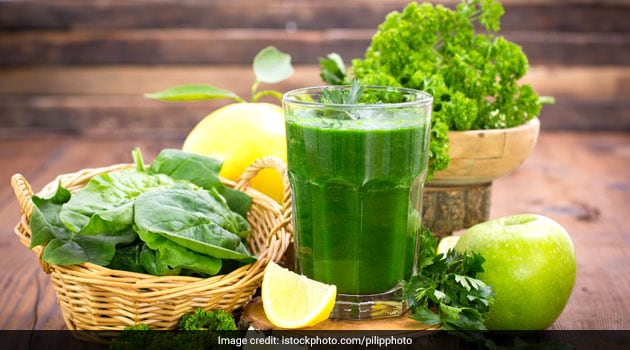
For years, we've been told that palak-paneer is a healthy, wholesome dish with the goodness of spinach which is rich in iron and cottage cheese which is full of calcium. Turns out it may not be the case.The science of food combinations is tricky but it is worth understanding. Simply put, the secret to healthy eating lies in pairing the right foods together that facilitate the absorption of all the nutrients. According to Ayurveda, if you pair your foods wrongly, it may lead to disrupt the balanced of doshas in your body and lead to indigestion. Wrong food combinations are perhaps the most common culprits of all your tummy troubles.
Area Dining: A change might do you good
Craig Venske wanted to be different.
Mission accomplished for the head chef and owner of Chameleon Cafe, north of Baxter on Highway 371 near Brainerd International Raceway.
Like the reptile it's named after, the restaurant is about change. Unlike a change in appearance, Venske wanted to change the lakes area's dining experience. With healthy food items and a minimalist approach to service and decor, Chameleon Cafe isn't your normal quick food stop. It's quick, but the menu and atmosphere provide more than what you might expect.
Mission accomplished for the head chef and owner of Chameleon Cafe, north of Baxter on Highway 371 near Brainerd International Raceway.
Like the reptile it's named after, the restaurant is about change. Unlike a change in appearance, Venske wanted to change the lakes area's dining experience. With healthy food items and a minimalist approach to service and decor, Chameleon Cafe isn't your normal quick food stop. It's quick, but the menu and atmosphere provide more than what you might expect.
Munch on: Here are 7 healthy yet delicious snacks for each day of the week
There’s a common perception that diet food is boring. But that’s not true. You can eat healthy without compromising on taste, and yes, that includes low calorie desserts too. Diet food contains fewer calories, and serves as a healthier alternative to conventional snacks such as potato chips, burgers and other fast food. Some diet foods are full of antioxidants, essential nutrients. Experts at salebhai.com list some of the healthy diet snacks and food that could be consumed on different days of the week.
Restaurant chains are quietly pushing sugar on your kids
Of the top 50 U.S. restaurant chains, more than half (56%) provided menus specifically for children that included sugary beverages — soda, lemonade, sugar sweetened juice drinks and others — according to a new report released this week by the Center for Science in the Public Interest, a Washington, D.C.-based think tank. “Restaurant foods are the largest category of food marketed to children and play a critical role in children’s diets,” the report said. “Children get an average of 25% of their calories from restaurant foods and beverages.”
8/4/17
6 healthy foods that cost less than $3
There are lots of myths about healthy eating. One is that kale tastes good, it might just be me but I find it tough and chewy and a pain in the butt.
Another is that it’s expensive. It is if you get misled into thinking that you must be consuming spoonfuls of raw Himalayan coconut oil tried and tested by Jesus only found in exclusive health food stores.
Facebook's Secret to Developing Great Leaders: Let People Do Their Jobs. Who's stopping you?
 |
| Designed by Freepik |
If you want to scale your business, then you also have to scale your team.
Take, for example, Uber. The departure of Travis Kalanick left a vacuum at the top of Uber because the company had not scaled its leaders the same way that it scaled its business.
It's now being reported that Facebook COO Sheryl Sandberg is being courted by Uber and Arianna Huffington to replace him as CEO. Uber would be lucky to have her.
5 easy tricks a dietitian uses to stick to her diet when eating out. Who's stopping you?
Trying to stay healthy? Eating out can be difficult. Dishes at restaurants are often designed to make us salivate with too much sugar or too much salt. They can be killer for your diet, depending on the dish or restaurant.
But eating out is about much more than food. It's about bonding with your friends and family, and keeping up your social life. Sometimes it can feel like being on a diet and eating out are mutually exclusive, but they don't have to be!
But eating out is about much more than food. It's about bonding with your friends and family, and keeping up your social life. Sometimes it can feel like being on a diet and eating out are mutually exclusive, but they don't have to be!
Hospital garden provides healthy food for cancer patients. Who's stopping you?
It’s quite a surprise for patients to see Jamar Sheffey serving three different hummus creations in the waiting room of the Womens Cancer Center of Magee Womens Hospital of UPMC in Oakland.
Sheffey is team lead caterer at Magee and many of the ingredients come from the garden on site. He’s also showing visitors how they can make the same dish at home.
Many aren’t familiar with hummus and they exchange laughs as he demonstrates different ways to make the dish. There’s even a recipe card to take with them.
It’s part of a nutrition program created by the hospital to help patients eat better and, in turn, hopefully feel better.
8/3/17
Healthy recipes abound with farmers market finds
JASPER — In front of a crowd of about 50 people, chefs Phil Barth and Tim Flick demonstrated how to create pestos and sauces, vegetable an...
8 Steps to Decipher Food Labels and Make Healthier Choices
The first step to making healthy food choices is knowing exactly what’s in the food you’re about to consume. Unfortunately, food manufacturers don’t always make it easy to know everything that’s in a particular food product, and hidden ingredients can wreck any diet.
It’s also important to understand what the values on a nutrition label mean, so you are able to make the right choices when it comes to protein, calories, fat, carbs, sodium and other nutrients.
If you want to make healthier choices for you and your family, here are eight steps to deciphering food labels:
1. Start with Serving Size and # of Servings Per Container — If the serving size is one cup and there is a total of about eight servings per container, then one container equals about eight cups.
2. Check the Calories Per Serving and Total Calories — If the calories per serving is 140 in an eight-cup container, then the calories per container is 1120 calories. If you were to have half of the container you would consume 560 calories.
3. Move On to % Daily Value — This portion of the label tells you the percent of each nutrient in a single serving. For example, if the label lists six percent for calcium, it means that one serving provides six percent of the calcium you need each day. % DV are based on a 2,000 calorie diet for healthy adults As a reference, if you want to consume less of a nutrient (such as sodium), choose foods with a % DV of five percent or less. If you want to consume more of a nutrient (such as fiber), seek foods with % DV of 20 percent or more.
4. Get Healthy Fat and Avoid the Others — Avoid trans fats or partially hydrogenated oils. Focus on trying to get healthy fats in your diet, such as coconut oil, avocado oil and olive oil and try to limit oils like canola, soy and corn.
5. Limit Sodium — It is recommended that adults consume less than 2300 milligrams of sodium a day.
6. Calculate Net Carbs — Aim to keep your net carbs between 20 and 100 grams per day for weight loss. Use this equation to calculate net carbs: Total Carbohydrates - Dietary Fiber - (Sugar Alcohols) = Net carbohydrates.
7. Protein is Key — Consume 60 to 100 grams of protein daily. If you are taller, you should aim to be near the higher end of that range. It is best to space your protein intake to about 20 to 30 grams every three to four hours.
8. Look at the Ingredient List — Ingredients are listed in order by weight, the first items on the list make up the bulk of the food. Look for food labels that contain unprocessed and recognizable ingredients. A good rule of thumb is if you can’t pronounce it, don’t recognize the ingredients or sugar is one of the first ingredients, put the product back on the shelf.
About the Author
Renell Cronk is a Registered Dietitian with PsyMed, Inc. She helps educate and prepare Nicholson Clinic patients before and after surgery with meal planning, recipe ideas, nutrition education and more. Nothing gives Renell a greater feeling of accomplishment and joy than helping individuals achieve their health, lifestyle and nutrition goals.
It’s also important to understand what the values on a nutrition label mean, so you are able to make the right choices when it comes to protein, calories, fat, carbs, sodium and other nutrients.
If you want to make healthier choices for you and your family, here are eight steps to deciphering food labels:
1. Start with Serving Size and # of Servings Per Container — If the serving size is one cup and there is a total of about eight servings per container, then one container equals about eight cups.
2. Check the Calories Per Serving and Total Calories — If the calories per serving is 140 in an eight-cup container, then the calories per container is 1120 calories. If you were to have half of the container you would consume 560 calories.
3. Move On to % Daily Value — This portion of the label tells you the percent of each nutrient in a single serving. For example, if the label lists six percent for calcium, it means that one serving provides six percent of the calcium you need each day. % DV are based on a 2,000 calorie diet for healthy adults As a reference, if you want to consume less of a nutrient (such as sodium), choose foods with a % DV of five percent or less. If you want to consume more of a nutrient (such as fiber), seek foods with % DV of 20 percent or more.
4. Get Healthy Fat and Avoid the Others — Avoid trans fats or partially hydrogenated oils. Focus on trying to get healthy fats in your diet, such as coconut oil, avocado oil and olive oil and try to limit oils like canola, soy and corn.
5. Limit Sodium — It is recommended that adults consume less than 2300 milligrams of sodium a day.
6. Calculate Net Carbs — Aim to keep your net carbs between 20 and 100 grams per day for weight loss. Use this equation to calculate net carbs: Total Carbohydrates - Dietary Fiber - (Sugar Alcohols) = Net carbohydrates.
7. Protein is Key — Consume 60 to 100 grams of protein daily. If you are taller, you should aim to be near the higher end of that range. It is best to space your protein intake to about 20 to 30 grams every three to four hours.
8. Look at the Ingredient List — Ingredients are listed in order by weight, the first items on the list make up the bulk of the food. Look for food labels that contain unprocessed and recognizable ingredients. A good rule of thumb is if you can’t pronounce it, don’t recognize the ingredients or sugar is one of the first ingredients, put the product back on the shelf.
About the Author
Renell Cronk is a Registered Dietitian with PsyMed, Inc. She helps educate and prepare Nicholson Clinic patients before and after surgery with meal planning, recipe ideas, nutrition education and more. Nothing gives Renell a greater feeling of accomplishment and joy than helping individuals achieve their health, lifestyle and nutrition goals.
8/2/17
Healthy recipes abound with farmers market finds

JASPER — In front of a crowd of about 50 people, chefs Phil Barth and Tim Flick demonstrated how to create pestos and sauces, vegetable and fruit dishes, and marinades for meats and grilled vegetables in a matter of minutes.
The majority of the foods they used came from vendors at the Jasper Farmers Market, the location of Saturday’s cooking demonstration.
Barth was a chef for more than 10 years before joining the Dubois County Health Department. Flick is another longtime chef who provides healthy meals through his company, Fueled Strength Meals. The two came together to give the 90-minute demonstration, which was sponsored by the Dubois County Public Health Partnership’s Healthy Eating, Active Living (HEAL) initiative.
“We want to help the people of Dubois County get more involved in their own health,” Barth said, “and empower you to make healthy decisions, to live a healthier lifestyle.”
Subscribe to:
Posts (Atom)




